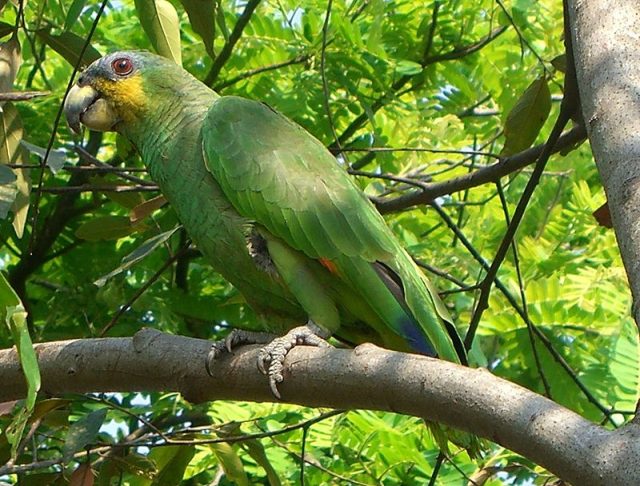Type the name of the breed you're looking for below
[wpdreams_ajaxsearchlite] Don't see the breed your're looking for? Click here and let us know!
Orange Winged Amazon Parrot
| Origin | It is a resident breeding bird in tropical South America, from Colombia, Trinidad and Tobago south to Peru, Bolivia and central Brazil. |
| Size | This species can grow up to 13 in(33 cm) |
| Lifespan | Can live up to 80 years |
| Noise | Moderate, talkative birds. |
| Characteristics | It has blue and yellow feathers on its head which varies in extent between individuals. The upper mandible is partly horn coloured (grey) and partly dark-grey. It has orange feathers in the wings and tail, which can be seen when in flight. The male and female are identical in external appearance. |
| Abilities | Can talk or mimic human conversation. |
| Interaction/Time Requirements, Diet, Supplies Needed | They require a warm habitat for the winter months. Do not allow your birds outdoors until all signs of frost are gone. Space is important and indoor cages should be as large as possible. A large cage is required even if the bird is going to spend lots of time out of its habitat with you. Their diet in the wild consists of mainly fruits, wild figs, unripe nuts, flower and leaf buds, and some seeds. In captivity, they will eat most fruits including mangos, figs, guavas, bananas, melons, stone fruits, grapes, citrus fruits, pears, apples, pomegranate and papaya (pawpaw). You need to change food and water daily, and clean the cage at least once a week, replacing toys and broken climbing branches. |
| Other Considerations | Parrots do well in aviaries and cages. They don't like to be in crowded spaces and will sometimes be aggressive towards other birds if they don't have enough space. Parrots can also be hand reared, provided that they have a large cage and are taken out of their cage on a daily basis to prevent boredom, as it may result in the parrot pulling out its feathers to occupy itself. |



